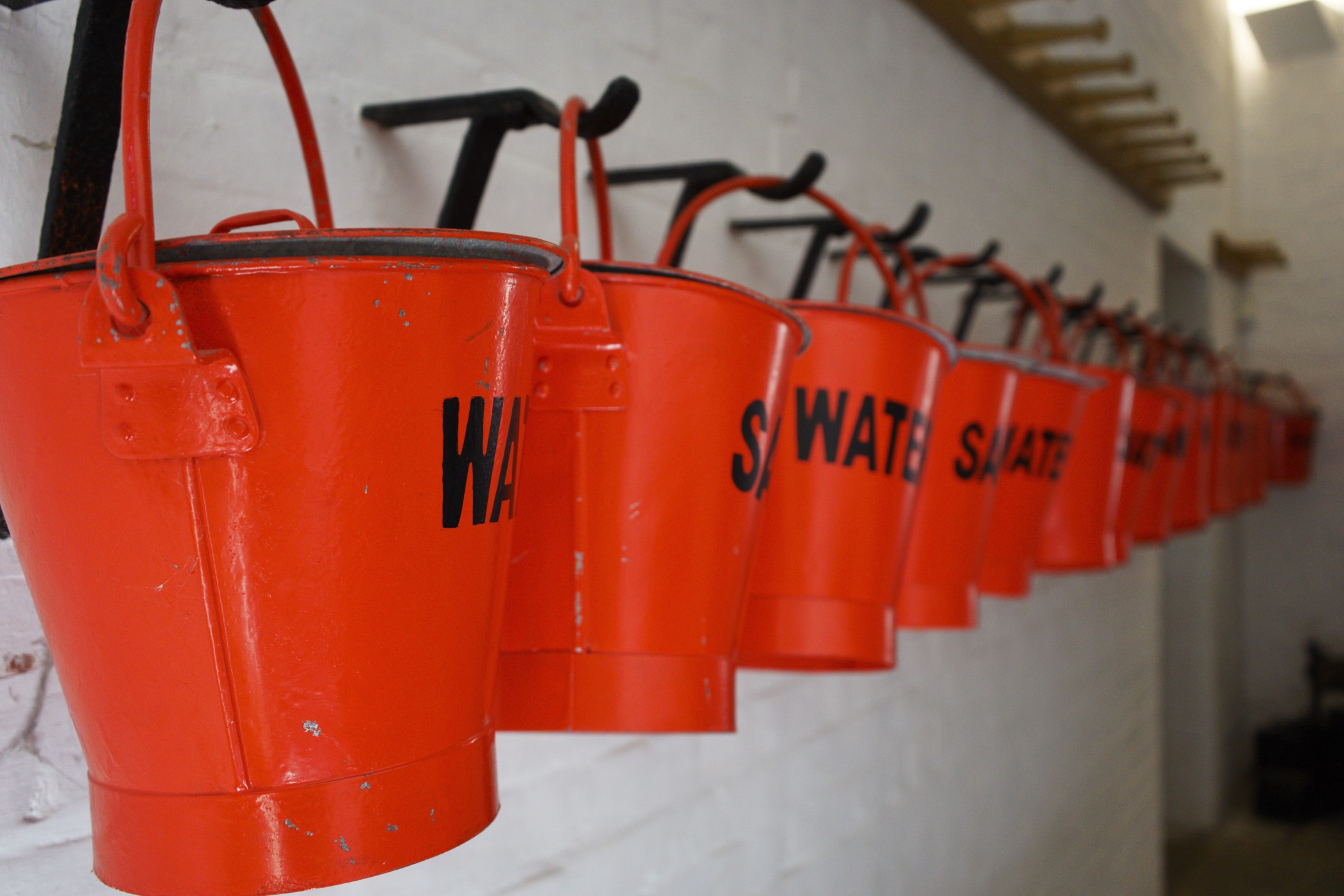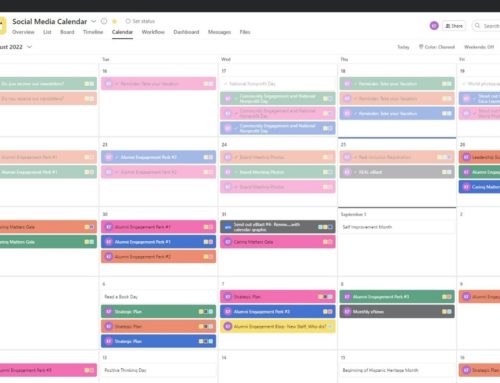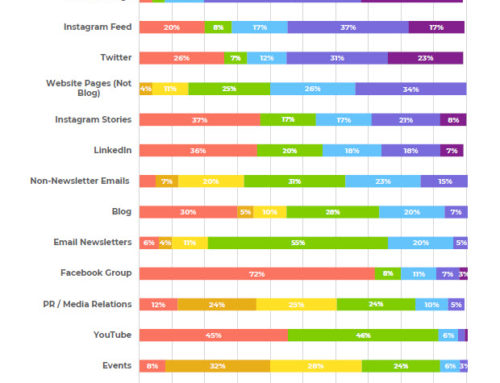
You are using an editorial calendar to manage your nonprofit’s communications. Awesome!
Now let’s make that tool even more strategic. Here’s one way to do that: Embed the existing communications capacity of your team into the editorial calendar and work from that as your baseline.
What Most Nonprofits Do with Their Editorial Calendars
Many nonprofit communicators listen to what is going on in their organizations and develop the editorial calendar based on the expressed needs and desires of their managers and coworkers. They also add in content that helps with their own overarching marketing goals like brand and reputation management, engagement, and awareness.
This can work, as long as what’s asked for roughly matches the capacity of the communications team. In other words, can the communications team produce the requested number of emails, social media posts, press releases, etc. in the requested timeframe? Again, in theory, this approach can work, but it relies on a fair amount of luck.
In reality, most nonprofits have too many possible things to talk about in their communications each month. If everyone on staff gets what they want, that means that the comms staff is overworked or best practices are being ignored. For example, you might end up sending out content on so many different topics that nothing really seems important.
Some nonprofits at the other end of the spectrum don’t have enough content, so they too fall short of best practices by not communicating frequently enough.
A Better Approach: Calendar Your Capacity Each Month as a Starting Point
Instead of this “wait and see” approach to editorial planning, I recommend that you build out a blank editorial calendar based on your capacity for each month. Think about how many emails, social media posts, flyers, press releases, etc. you can reasonably create without lots of stress or anxiety or burning out the comms staff.
These are what I sometimes call your default “slots” or “buckets” that will need to be filled with actual content (messaging, visuals).
Go ahead and map these out on your editorial calendar, without the content first.
Here’s how we do this at Nonprofit Marketing Guide:

We use three different Google calendars, all different shades of green. The darkest green is our private Community calendar, with buckets on Monday and Wednesday here. The mid-range green is our Email calendar, with content Monday through Thursday this week. The lightest green is the Blog calendar, with posts Tuesday through Friday in this example.
Each week of the editorial calendar looks similar to this. Some items repeat every week, like the Update Pass Holders and E-Newsletter Out emails. Others are added week to week, like the Instagram Promo email, which will promote an upcoming webinar on Instagram.
You’ll also notice “Kivi Something” as a blog bucket on Thursdays. When I know what I am actually going to blog about, I will change that on the calendar.
This is pretty typical for our capacity: We blog 3-4 times a week now, and we email something most Mondays thru Thursdays, although much of that is segmented to specific parts of our mailing list.
Even if you don’t know the actual content yet, you can put these placeholder buckets on the calendar so others can see what’s possible. Then as you negotiate what you want to talk about, when and in what channel, you make those generic buckets or slots more specific.
Adding More Beyond the Baseline
What if you need to send out more emails beyond the baseline buckets? Of course, you can do that, but it will be more of a conscious decision than just putting all of the requests on the editorial calendar.
You’ll be able to see if you can fill an empty bucket in the future, swap things around, or if you really do need to add a new bucket for the topic that came up. As you add more buckets, be mindful of the workload impacts for you and others. Remember that not every topic gets equal communications treatment and to think about the appropriate response level.






